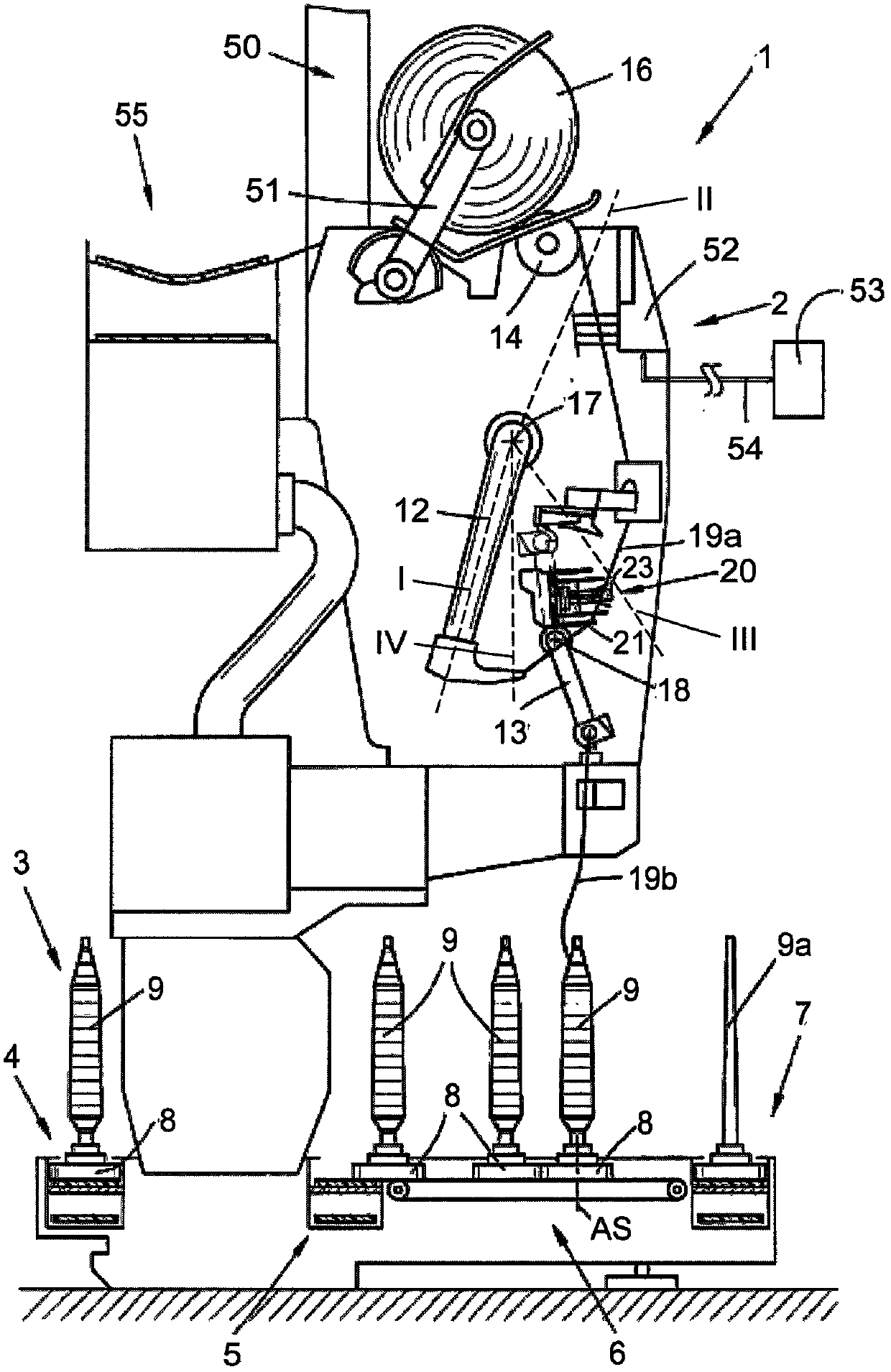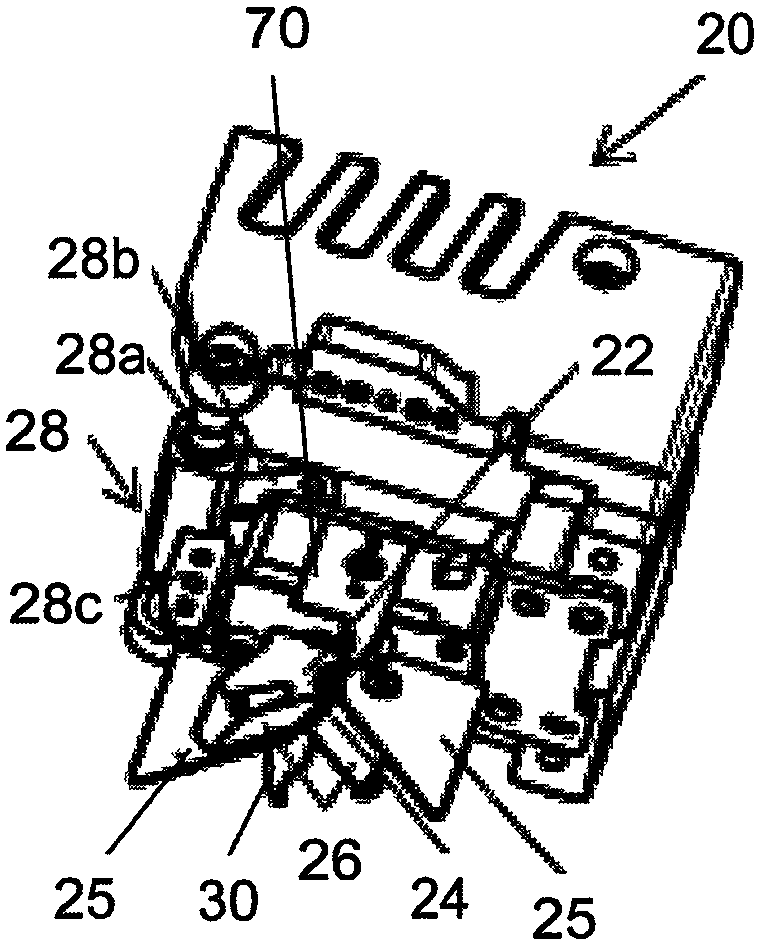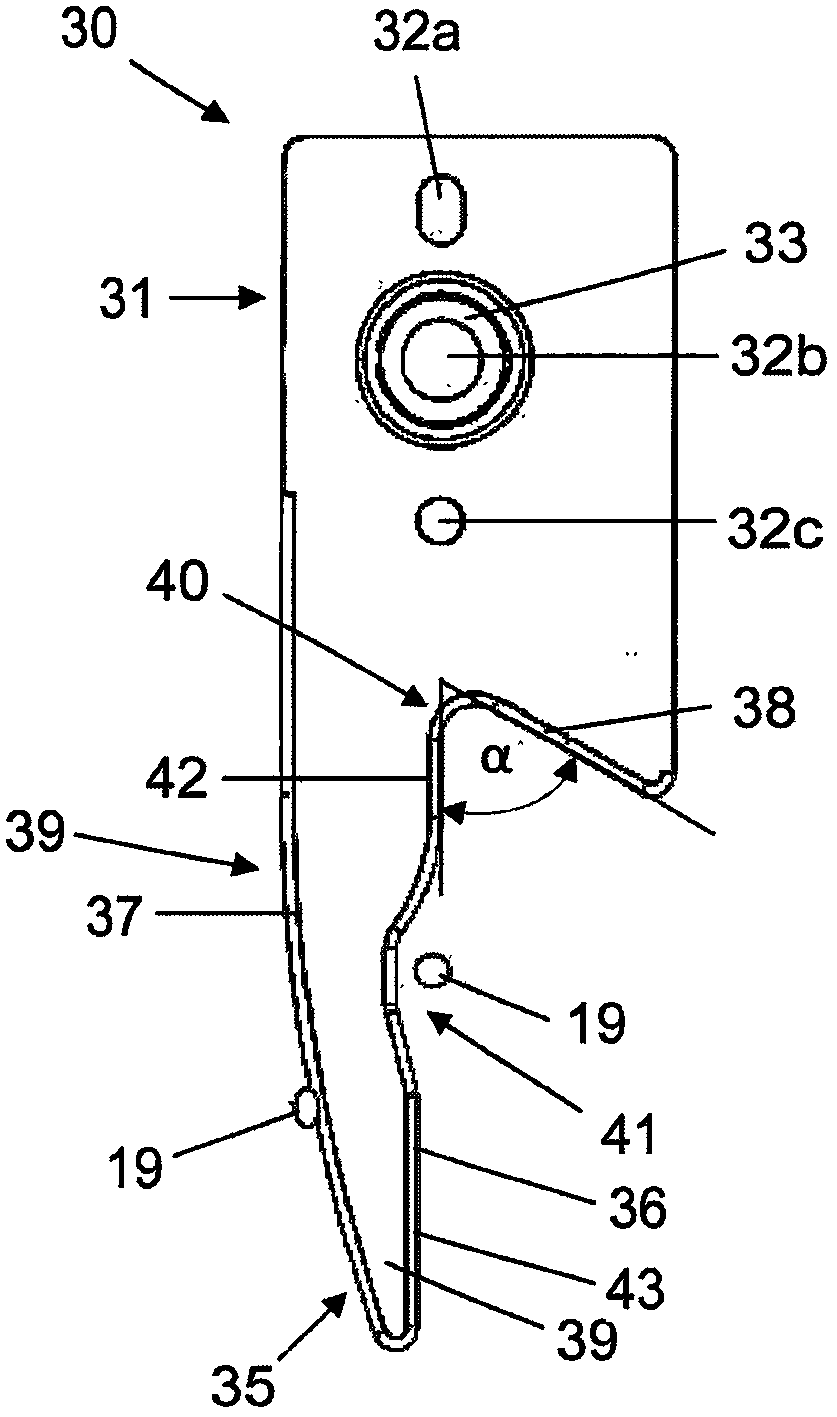Method for correcting yarn movement at a textile machine station for the manufacture of cross-wound bobbins
A technology for cross-winding bobbins and textile machines, which is used in thin material handling, conveying filamentous materials, transportation and packaging, etc., and can solve problems such as damage and failure of textile machine parts.
- Summary
- Abstract
- Description
- Claims
- Application Information
AI Technical Summary
Problems solved by technology
Method used
Image
Examples
Embodiment Construction
[0023] figure 1 A schematic side view of a station 2 of a textile machine, here in the form of an automatic cross-winding winder 1 , according to one embodiment is shown.
[0024] As is known, such an automatic cross-winding winder 1 has a plurality of identical stations 2 , here winding stations 2 , between its (not shown) end supports. On the winding station 2, the tube 9 loaded as an unwinding bobbin is rewound into a large package cross-wound bobbin 16 forming a winding bobbin.
[0025] The winding station 2 has a yarn splicer 10 set back slightly with respect to the normal yarn travel path for the piecing connection of a so-called top yarn 19 a from a cross-wound bobbin 16 with a so-called ground yarn 19 b from a bobbin 9 . Such a splicing connection may be necessary, for example, after providing a new bobbin 9, after a yarn break, or after a controlled so-called clearing cut-off in order to remove yarn defects.
[0026]The basic mode of operation of such an automatic c...
PUM
 Login to View More
Login to View More Abstract
Description
Claims
Application Information
 Login to View More
Login to View More - R&D
- Intellectual Property
- Life Sciences
- Materials
- Tech Scout
- Unparalleled Data Quality
- Higher Quality Content
- 60% Fewer Hallucinations
Browse by: Latest US Patents, China's latest patents, Technical Efficacy Thesaurus, Application Domain, Technology Topic, Popular Technical Reports.
© 2025 PatSnap. All rights reserved.Legal|Privacy policy|Modern Slavery Act Transparency Statement|Sitemap|About US| Contact US: help@patsnap.com



